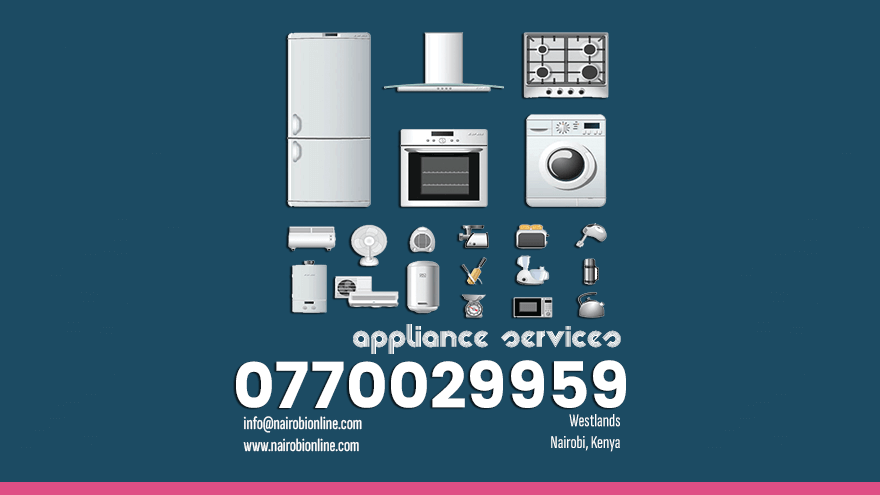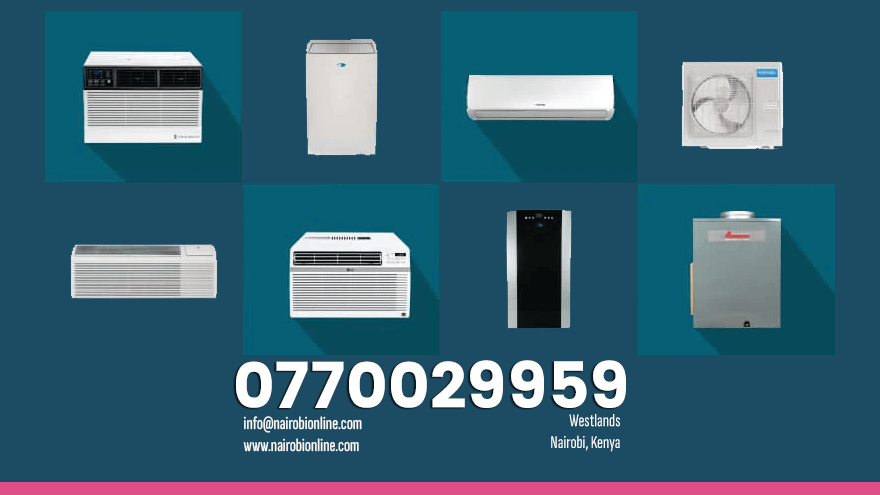Tower Air Conditioners – AC HVAC Types, How They Work, Common Faults & Repairs
In Nairobi, where cooling demands are significant, Tower Air Conditioners in Nairobi stand out as a practical choice for maintaining comfortable indoor environments. By investing in regular maintenance and timely repairs, you can ensure these systems deliver consistent results, enhancing both comfort and energy efficiency.
Tower air conditioners, also referred to as floor-standing air conditioners, are a popular choice for cooling large spaces efficiently. These units are particularly favored in regions with warm climates, such as Nairobi, where effective temperature control is essential for comfort. This comprehensive service post explores the types of Tower Air Conditioners in Nairobi, their operational mechanisms, common faults, and repair strategies. Whether you are a homeowner, business owner, or technician, this guide provides valuable insights into maintaining optimal performance from these HVAC systems.
Types of Tower Air Conditioners
Tower air conditioners come in various configurations, each designed to meet specific cooling needs. The primary types include:
- Single-Unit Tower Air Conditioners: These standalone systems house all components—evaporator, condenser, and compressor—in a single vertical unit. They are ideal for small to medium-sized spaces and are commonly used in homes and offices across Nairobi due to their ease of installation.
- Split Tower Air Conditioners: These consist of an indoor tower unit and an outdoor condenser unit connected by refrigerant lines. Split systems offer quieter operation and greater cooling capacity, making them suitable for larger commercial spaces or residences in Nairobi seeking Tower Air Conditioners in Nairobi for enhanced efficiency.
- Portable Tower Air Conditioners: Designed for mobility, these units can be moved between rooms. While less powerful than fixed systems, they provide a flexible cooling solution for temporary needs or smaller areas.
Each type serves a distinct purpose, and selecting the appropriate model depends on factors such as room size, budget, and installation constraints.
Informative Nugget: “According to HVAC industry standards, split tower air conditioners can reduce energy consumption by up to 30% compared to traditional window units, offering a sustainable cooling option.”
Washing Machine Repair in Nairobi

How Tower Air Conditioners Work
The operational principle of tower air conditioners aligns with standard HVAC technology, relying on the refrigeration cycle to remove heat from indoor spaces. The process involves the following stages:
- Evaporation: Inside the indoor unit, a refrigerant absorbs heat from the room air as it evaporates, transforming from a liquid to a gas. This cooled air is then circulated back into the space.
- Compression: The gaseous refrigerant is compressed in the compressor, increasing its temperature and pressure.
- Condensation: The hot, pressurized gas moves to the condenser, where it releases heat to the outdoors and condenses back into a liquid.
- Expansion: The liquid refrigerant passes through an expansion valve, reducing its pressure and temperature before re-entering the evaporator to repeat the cycle.
In Tower Air Conditioners in Nairobi, this cycle is optimized for high ambient temperatures, ensuring consistent cooling even during peak heat periods. Fans within the tower unit enhance air distribution, making these systems effective for larger areas.
Common Faults in Tower Air Conditioners
Despite their robust design, tower air conditioners are susceptible to faults, particularly in demanding environments like Nairobi’s warm and dusty climate. Below are some prevalent issues:
- Refrigerant Leaks: Low refrigerant levels due to leaks can diminish cooling efficiency. This often results from worn seals or damaged piping.
- Clogged Air Filters: Dust accumulation in filters restricts airflow, forcing the unit to work harder and increasing energy consumption.
- Electrical Failures: Faulty wiring, capacitor issues, or power surges can disrupt the unit’s operation, leading to intermittent cooling or complete shutdowns.
- Drainage Problems: A blocked condensate drain can cause water leakage, potentially damaging the unit or surrounding areas.
- Compressor Malfunction: As the heart of the system, a failing compressor—often due to overheating or wear—can halt the refrigeration cycle entirely.
Regular maintenance of Tower Air Conditioners in Nairobi can mitigate these issues, ensuring prolonged functionality and comfort.
Informative Nugget: “Studies show that 70% of air conditioner breakdowns are preventable with routine maintenance, such as cleaning filters and checking refrigerant levels.”
Repairs for Tower Air Conditioners
Addressing faults promptly is critical to restoring performance and preventing further damage. Below are repair strategies for common issues:
- Fixing Refrigerant Leaks: Technicians locate leaks using specialized tools, repair the affected areas, and recharge the system with the correct refrigerant type and volume.
- Cleaning or Replacing Filters: Clogged filters should be cleaned with water and mild detergent or replaced if damaged. This simple step can significantly improve airflow and efficiency.
- Electrical Repairs: Faulty components like capacitors or relays require replacement by a qualified technician. Ensuring proper voltage and grounding prevents recurrence.
- Clearing Drainage Systems: Blocked drains can be cleared using a wet/dry vacuum or by flushing the line with a vinegar solution to remove debris.
- Compressor Replacement: A malfunctioning compressor often necessitates professional replacement, as it involves handling refrigerants and intricate system integration.
For residents and businesses relying on Tower Air Conditioners in Nairobi, engaging certified HVAC professionals ensures repairs are conducted safely and effectively.
Maintenance Tips for Optimal Performance
Preventive maintenance extends the lifespan of tower air conditioners and enhances their efficiency. Consider the following practices:
- Regular Cleaning: Wipe down the unit’s exterior and clean filters monthly to prevent dust buildup.
- Annual Servicing: Schedule professional inspections to check refrigerant levels, electrical components, and overall system health.
- Proper Placement: Ensure the unit is installed in a well-ventilated area, away from direct sunlight or obstructions that could impede airflow.
By adhering to these guidelines, users of Tower Air Conditioners in Nairobi can enjoy consistent cooling and reduced repair costs.
Informative Nugget: “The U.S. Department of Energy estimates that regular HVAC maintenance can improve system efficiency by 15-20%, translating to significant energy savings over time.”
Why Choose Tower Air Conditioners in Nairobi?
Tower air conditioners offer distinct advantages for Nairobi’s climate and urban settings. Their vertical design saves floor space, making them ideal for apartments, offices, and retail establishments. Additionally, their powerful cooling capacity addresses the region’s high temperatures, while modern models incorporate energy-saving features to lower electricity bills. With proper care, these units provide a reliable, long-term cooling solution tailored to local needs.
Tower air conditioners represent a versatile and efficient HVAC option, well-suited to diverse applications. Understanding their types, operational mechanics, common faults, and repair methods empowers users to maximize performance and durability.
For those seeking professional assistance or installation of Tower Air Conditioners in Nairobi, consulting with certified HVAC specialists guarantees quality service and peace of mind. Stay proactive in caring for your unit, and it will serve you reliably for years to come.
View this post on Instagram

